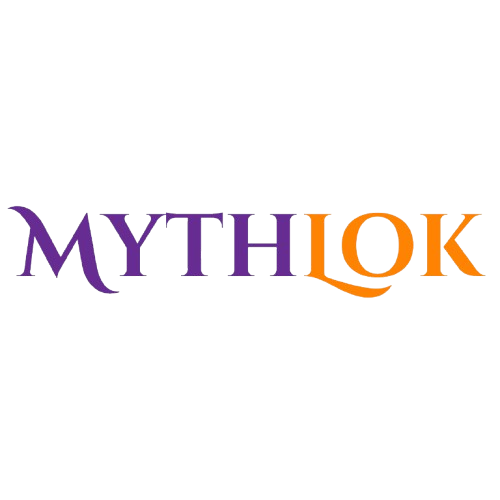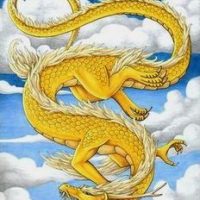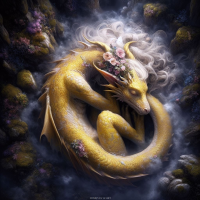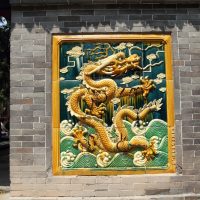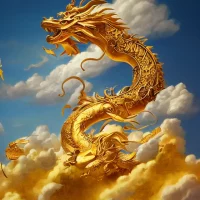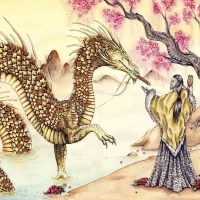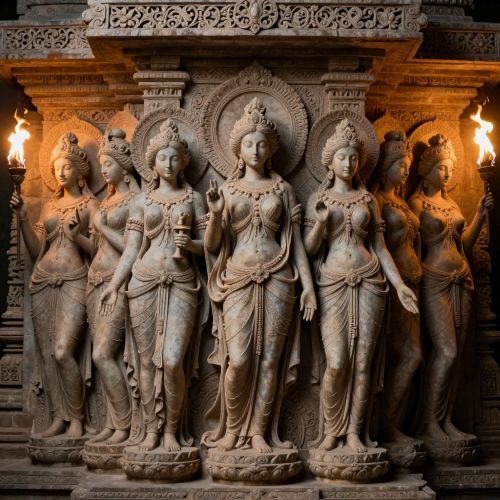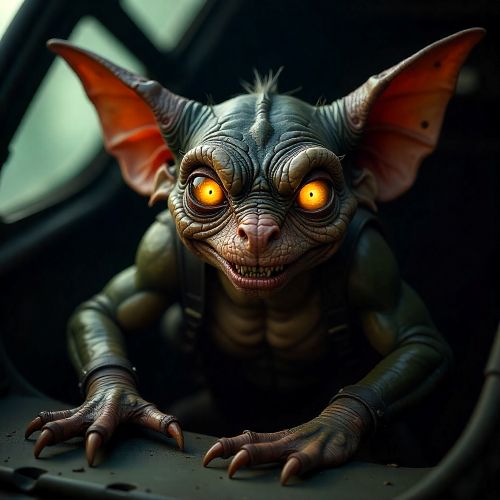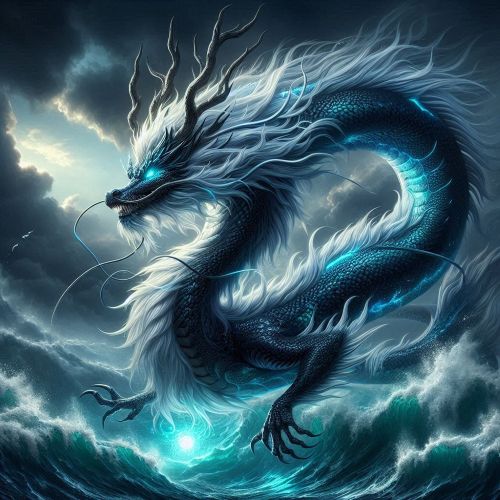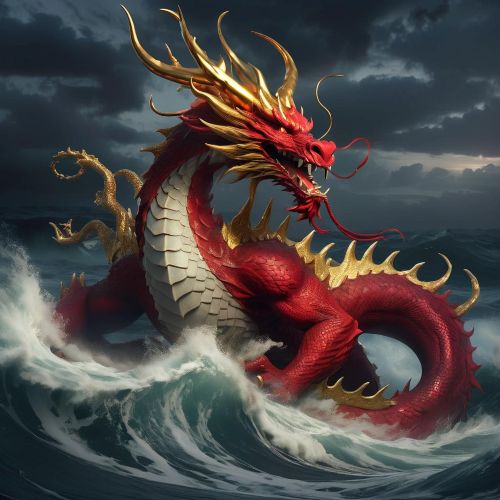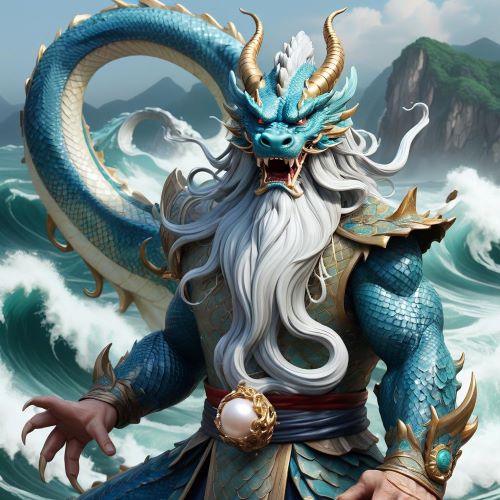Huanglong : The Yellow Dragon
Listen
At a glance
| Description | |
|---|---|
| Origin | Chinese Mythology |
| Classification | Animals |
| Family Members | N/A |
| Region | China |
| Associated With | Wisdom, North |
Huanglong
Introduction
In Chinese mythology, myriad captivating beings emerge, each bearing unique significance reflecting facets of nature, humanity, and the divine. Among these illustrious entities, the Huanglong, renowned as the Yellow Dragon, occupies a place of prominence, embodying the earth, imperial authority, and the cosmic nexus. Revered as the embodiment of vitality, sagacity, and sovereign might, the Huanglong commands admiration and respect throughout Chinese folklore. Its portrayal as a resplendent dragon, adorned with scales of glistening gold, captivates the imagination and instills a sense of divine majesty.
In the pantheon of Chinese myth, the Huanglong symbolizes the very essence of the Yellow Emperor, Huangdi, a revered figure in ancient history, whose legacy resonates through the ages. Esteemed as the harbinger of spring and the guardian of the East, the Huanglong is celebrated for its profound wisdom and formidable power. Often depicted as a sinuous serpent with the visage of a dragon, its luminous yellow scales evoke imagery of the earth and the pivotal role it plays within the Chinese Five Elements cosmology.
Physical Traits
In Chinese mythology, Huanglong emerges as a magnificent dragon adorned in scales of pure gold, shimmering brilliantly under the sun’s gaze. Its eyes sparkle like precious gems, and its sinuous form moves with graceful fluidity through the celestial expanse, evoking awe and reverence. Legend holds that the presence of Huanglong heralds prosperity and fortune, its appearance often coinciding with abundant harvests and blessings bestowed from celestial realms. This majestic creature, depicted as a serpentine dragon, glides through the heavens with effortless elegance, lacking wings yet possessing the mystical ability to ascend to celestial realms. Its resplendent scales, bathed in a radiant yellow hue, symbolize its profound connection to the earthly domain.
Unlike its Western counterparts characterized by fiery breath and menacing claws, Huanglong exudes an air of regal benevolence. Its golden scales reflect the fecundity of the earth and the nurturing warmth of the sun, embodying the essence of prosperity and vitality. Iconic portrayals often feature Huanglong adorned with five claws, emblematic of its imperial heritage and boundless authority. Some depictions accentuate majestic horns atop its head, symbolizing strength and wisdom, while others emphasize its serpentine form, gracefully traversing landscapes of mountains and clouds with unparalleled grace and majesty.
Family
Within Chinese mythology, Huanglong holds a distinguished place as one of the four celestial symbols alongside the Azure Dragon of the East, the Vermilion Bird of the South, and the White Tiger of the West. Revered as guardians of the cardinal directions, these majestic creatures are revered for their cosmic significance. Huanglong, in particular, shares a profound connection with the Yellow Emperor, an iconic figure regarded as the progenitor of the Chinese people.
In various narratives, Huanglong is depicted as the zoomorphic embodiment of the Yellow Emperor, symbolizing both his celestial lineage and earthly sovereignty. Moreover, within the intricate web of Chinese folklore, Huanglong is sometimes depicted as a celestial kin or progeny of legendary dragons such as Ao Guang, the illustrious Dragon King of the East Sea, and Yinglong, the enigmatic Winged Dragon of Hidden Treasures. Such portrayals further enrich the mythological tapestry, highlighting Huanglong’s multifaceted role within the cosmic order.
Other names
Huanglong, alternatively recognized as the Yellow Emperor, shares an enduring association with the revered figure of Huangdi, an illustrious sovereign and cultural icon in ancient Chinese lore. The multifaceted significance of Huanglong is evident in its diverse array of appellations. Referred to as the “Earth Dragon,” it embodies a profound connection to the land and its nurturing essence. Similarly, the title of the “Central Dragon” underscores its pivotal position at the cosmic core. Additionally, designations like the “Kunlun Dragon” draw parallels to Mount Kunlun, a mythical realm believed to be the dwelling place of immortals and divine beings. Such varied names encapsulate the rich tapestry of symbolism woven around Huanglong, elucidating its manifold roles within the cultural and mythological landscape of China.
Powers and Abilities
Endowed with divine essence, Huanglong is revered for its boundless wisdom and formidable prowess. It is attributed with mastery over the very earth itself, capable of instigating seismic shifts and altering the landscape. As a symbol of centrality, Huanglong is intricately linked with the seasonal cycles, heralding the transitions between periods of abundance and renewal. Believed to be a harbinger of prosperity and auspicious fortune, Huanglong’s influence is far-reaching and profound. Legends abound with tales of its extraordinary capabilities, from the manipulation of natural elements to the bestowal of blessings upon those deemed worthy. Through its presence, Huanglong is believed to engender harmony and equilibrium, ensuring the delicate balance of the cosmos remains undisturbed.
Modern Day Influence
In contemporary Chinese culture, Huanglong maintains its status as a potent emblem of authority, sagacity, and prosperity. Its enduring presence is evident in various forms of artistic expression, including literature, visual arts, and popular media, underscoring the enduring influence of Chinese mythology. The renowned Huanglong Valley, designated as a UNESCO World Heritage Site for its stunning array of vibrant pools crafted by calcite deposits, pays homage to this mythical entity, reinforcing its cultural significance in modern China. Yet, beyond its tangible manifestations, Huanglong continues to ignite the creative imagination. Its evocative image permeates Chinese literature, paintings, and cinematic works, serving as a wellspring of inspiration for artists and storytellers alike. Moreover, its symbolic resonance promotes values of harmony, equilibrium, and reverence for the natural world, fostering a universal appeal that transcends generational and cultural boundaries.
Related Images
Frequently Asked Questions
What is lorem Ipsum?
I am text block. Click edit button to change this text. Lorem ipsum dolor sit amet, consectetur adipiscing elit. Ut elit tellus, luctus nec ullamcorper mattis, pulvinar dapibus leo.
What is lorem Ipsum?
I am text block. Click edit button to change this text. Lorem ipsum dolor sit amet, consectetur adipiscing elit. Ut elit tellus, luctus nec ullamcorper mattis, pulvinar dapibus leo.
What is lorem Ipsum?
I am text block. Click edit button to change this text. Lorem ipsum dolor sit amet, consectetur adipiscing elit. Ut elit tellus, luctus nec ullamcorper mattis, pulvinar dapibus leo.
What is lorem Ipsum?
I am text block. Click edit button to change this text. Lorem ipsum dolor sit amet, consectetur adipiscing elit. Ut elit tellus, luctus nec ullamcorper mattis, pulvinar dapibus leo.
What is lorem Ipsum?
I am text block. Click edit button to change this text. Lorem ipsum dolor sit amet, consectetur adipiscing elit. Ut elit tellus, luctus nec ullamcorper mattis, pulvinar dapibus leo.

